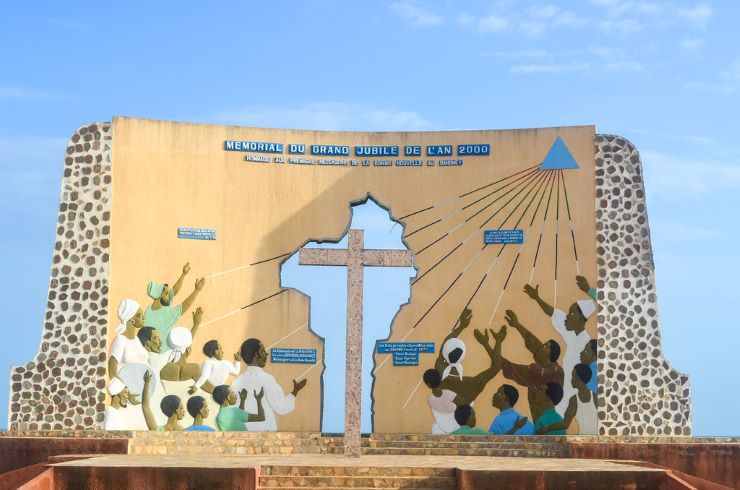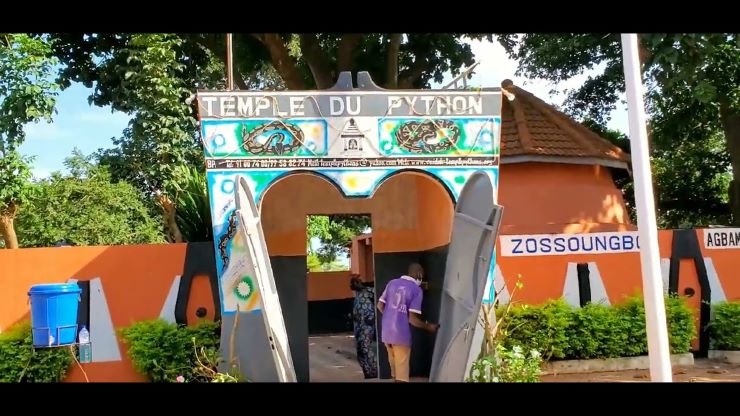Benin, a country in West Africa, has a vibrant port city called Cotonou that welcomes visitors daily because there are lot of fun things to do in Cotonou.
The city is home to 49-acre (20-hectare) market, unique art galleries, and outstanding architecture.
It was formerly a part of the Dahomey Kingdom and serves as the beginning of the so-called Benin-Niger Railway, which travels 273 miles (439 km) northward before coming to an end at Parakou in the heart of Benin.
The major urban area in Benin and the country’s economic center is Cotonou. Brewing, textile manufacturing, and palm oil processing are some of its industries. Cotonou is home to the president and the majority of the cabinet.
Both Benin and the neighboring nation of Togo are served by the state-of-the-art artificial deep water ports at Cotonou.
In Fon, the name “Cotonou” means “by the river of death”. Cotonou, then known as “Kutonou,” was a little fishing community at the start of the 19th century.
It is believed that King Ghezo of Dahomey founded Cotonou formally in 1830. It expanded as a hub for the slave trade and later the trade in cotton and palm oil.
With so much rich history about this bustling city, there are fun things to do in Cotonou to make your stay in the city worth it.
- The Dantokpa Market
- Notre Dame des Apotres Cathedral
- Witness Vodun Festival
- Pay a visit to Ganvie
- Go for a sightsee in Ouidah
- Visit the Temple of Pythons
- The Slave Route and the Door of No Return
- Tour Ouidah Museum of History
1. The Dantokpa Market

Dantokpa Market is the largest open-air market in West Africa and it sprawls over 49 acres (20 hectares) bustling with sellers and customers.
Also, a sizable chunk of it offers animal parts and plant-based medications to those who practice Vodun.
Prices vary depending on your ability to haggle, but if you’re lucky, you’ll come across a willing local who can show you the ropes when it comes to getting a decent deal.
2. Notre Dame des Apotres Cathedral
With its striking, tiled red and white stripes, this cathedral is remarkable and difficult to overlook.
In addition to being a center of worship, it also has a bookstore with Beninese and African French books. Even English-language publications written by writers from the Benin diaspora as well as textbooks for children back home are available.
Related post: Interesting Facts About The Gambia
3. Witness Vodun Festival

Vodun, which the government of Benin has declared to be an official religion, is an indigenous form of animistic worship of a single divine creator (a woman) who can only be approached through more approachable intermediates or spirits.
These spirits stand in for a variety of occurrences, including earth, nature, war, justice, and healing. You can set up a meeting with the Vodun spiritual chief priest to learn more about the faith.
Bring an offering, and if you need help translating, employ a guide from the tourist information office. The priest can set up a Vodun ceremony for you to see, where worshippers might become “possessed” by a spirit as drummers play rhythms of adoration.
When possessed by a spirit, believers dance frantically while clad in white. The ancient religion was said to be the inspiration behind religions such as a Haitian voodoo.
4. Pay a visit to Ganvie

The lakeside community of Ganvie, which means “we survived,” is well-liked by tourists. The only town on stilts in the entire world is home to over 30,000 people.
In what is known as the Venice of Africa, their bamboo homes are supported by poles on a 12,000-acre (4,856-hectare) lake.
Digout canoes are used by residents to go between homes, to visit neighbors, stores, restaurants, the hospital, church, or the bank. The school is the sole structure on the small plot of land.
The locals, who fled to this area in the 1700s from a dangerous tribe, have become used to a life on the river that hasn’t altered much.
5. Go for a sightsee in Ouidah

The birthplace of the famous Vodun religion and the location where shackled people were abducted and forced into boats to cross the Atlantic to become slaves are both reached along a palm-tree lined path.
6. Temple of Pythons

There is a pit inside the ancient site known as the Temple of Pythons that is home to live royal python snakes. They are harmless to humans, but unique because Vodun worshipers hold them in high regard as holy icons.
7. The Slave Route and the Door of No Return

The Slave Route is a 4-km (2.5-mi) dirt route where shackled men, women, and children were made to trek to the beach in order to be sold abroad. It leads to the Door of No Return, a concrete and bronze arch created as a memorial to the more than one million slaves who were coerced into boarding slave ships bound for the Americas.
The museum, a memorial that first opened in 1962, has a painting that spans the top of the arch and depicts manacled slaves marching out through the waves toward a life of insurmountable adversity.
Vodunists hold that the Mami Wata (Mammy Water) ghost governs the waves that lap this historic site’s shore.
8. Ouidah Museum of History
The Slave Route is a 4-km (2.5-mi) dirt route where shackled men, women, and children were made to trek to the beach in order to be sold abroad.
It leads to the Door of No Return, a concrete and bronze arch created as a memorial to the more than one million slaves who were coerced into boarding slave ships bound for the Americas.
The museum, a memorial that first opened in 1962, has a painting that spans the top of the arch and depicts manacled slaves marching out through the waves toward a life of insurmountable adversity. Vodunists hold that the Mami Wata (Mammy Water) ghost governs the waves that lap this historic site’s shore.

